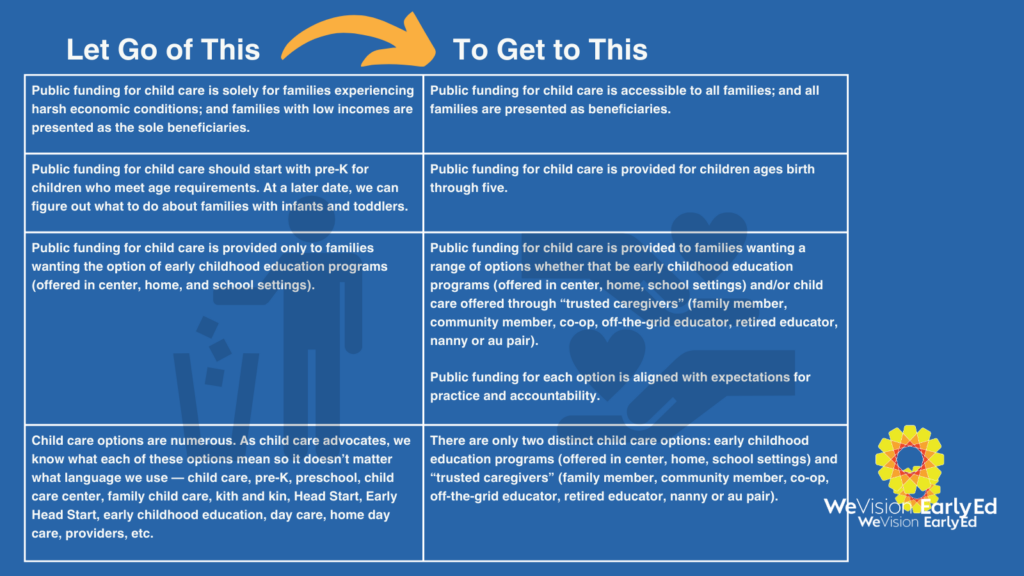For too long, public funding for child care has been provided only during extreme circumstances and to certain families:
- Men at war and women need to work outside their homes? Then use government funding to help support access to quality child care but stop the funding when the war is over.
- Families experiencing harsh economic conditions? Then use government funding to help support access to quality child care but stop the funding when a family’s income increases.
- Essential workers need child care during the COVID-19 health pandemic? Then use government funding to help support access to quality child care but stop the funding when the pandemic ends.
The data we continue to collect through WeVision EarlyEd tells a different story. Government funding for child care isn’t needed just for families or a nation in crisis. Regardless of their zip code, employment status, or income levels, most families with young children want and need child care support. Just this past year we published a report that looked at child care supply and demand across Washington, D.C., and found that families across the board struggled to find quality, affordable, and accessible child care. This is a nationwide phenomenon not just unique to the District of Columbia.
We’ve also learned that families want a range of child care options that include Early Childhood Education Programs in center, home, or school settings as well as what we’ve termed “trusted caregivers.”
- Early Childhood Education Programs (regardless of their setting type, specialty, or philosophy) are implemented by intentionally prepared and competent early childhood educators who are accountable for meeting standards of practice defined by their professional associations and/or government agencies.
- By contrast, trusted caregivers are individuals who work under the direct auspices of families without significant oversight from early childhood education professional associations and government agencies. Trusted caregivers can include a family member, community member, co-op, off-the-grid educator, retired educator, nanny, or au pair.

Therefore, the narrative around child care has to shift. Child care cannot be presented solely as a poverty intervention, labor benefit, or forced labor participation tool. Government-funded child care cannot continue to segregate families based on income, which results in racial segregation due to racialized inequities as well as poorer outcomes for children. We must also respect family preferences and support child care options that include both early childhood education programs and trusted caregivers, and the distinction between these options must be made clear. It’s time for a paradigm shift where comprehensive public funding for child care is not a reactive measure but a proactive investment in the well-being of all young children, families, and communities.
So what can we do right now?
Here are four ways to shift our advocacy messages to get closer to what families want in a reimagined child care system:


